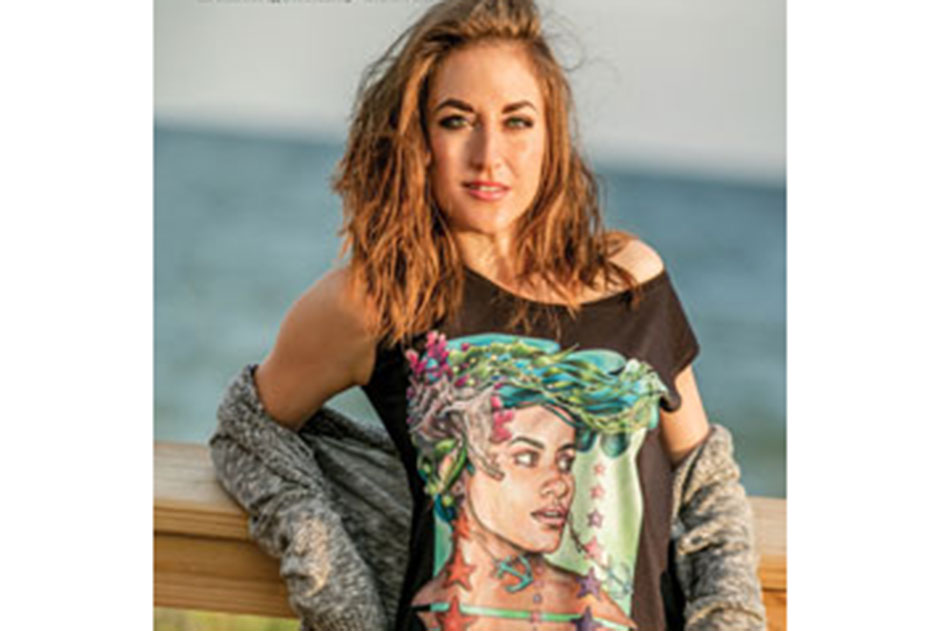In response to major shifts in consumer lifestyles, the performancewear market has continued to soar above preconceived expectations.
With the term “athleisure” taking over the industry, active lifestyles now are more apparent than ever, cementing the notion they are here to stay. Taking notice, performancewear industry leaders are using the phrase “made for movement” as inspiration when it comes to their activewear lines.
Performancewear now walks that fine line of comfortability, balancing the necessary requirements of athletic activity with the casual movement central to a consumer’s everyday lifestyle. Current styles include garments that keep standard performance features at the forefront, yet also highlight stylish details, such as tailored or loose fits, depending on wearers’ tastes. This combination not only allows performancewear to be suitable for on-court or on-field needs, but also caters to the versatile uses an everyday consumer experiences — a run in the park, a trip to the grocery store, an afternoon gym session or picking up the kids from school.
With this ever-evolving concept in mind, suppliers are creating more options for consumers while, in turn, increasing potential profits.
Lifestyle Metamorphosis
The performancewear category gets broader as more non-athletes demand increased performance characteristics in their garments, and it gets deeper as manufacturers find ways to put more features into garments that increase performance for specific sports.
According to Adam Waugh, vice president of marketing for A4, performancewear has subtly been bleeding into consumers’ everyday lives for many years.
“In some cases, it is used as a signal to others that the wearer leads an active lifestyle,” says Waugh. “In other cases, it is simply that the performancewear is more comfortable, especially in the summer months when the cooling properties of a performance tee, for instance, are really desirable.”
Jeanene Edwards, vice president of activewear marketing and merchandising, Fruit of the Loom/JERZEES, agrees, saying performancewear has become a staple, permitting wearers to be comfortable during daily activities.
“Performancewear is an everyday garment for casual [usage], leisure and lounging, outdoors and more,” Edwards says. “Consumers are looking for versatile clothing for the workplace, team or fan gear, and promotional wear. In comparison to a basic cotton tee, the features of performancewear allow the wearer to control where and how they want to wear it.”
When considering where peformancewear falls on the athletic- apparel spectrum, most industry professionals agree athleisure has successfully bridged the gap between sports garments and casual wear. Although athleisure is the trend and performancewear is the apparel type, the industry has managed to capitalize on the former by providing quality performance garments that achieve function and comfort for consumers.
“We have redefined what we consider performancewear, as we now look for performance features in lifestyle apparel,” says Marcus Davis, production development manager for HanesBrands. “For example, you want to stay dry and cool at the gym but also at the office, running errands or [when you’re] out with friends. When you are at the office, you don’t want a wet, wrinkled shirt; you don’t want to have to worry about odor. We want everyday apparel to have the same features once valued only in performancewear.”
Function & Features
Due to this new convergence, the traditional characteristics and features of performancewear also have been elevated. Odor-control and moisture-wicking properties are a continued must for apparel in this category to sustain its popular breathability.
“Moisture-wicking characteristics are still important and will not go away,” says Vince Winters, president of Jettco Intl. Inc. “What is changing are new techniques, like crimping the yarns and blending with polypropylene and other fibers to increase the speed of the wicking process. [The] antimicrobial [property] is also very important to help mitigate lingering body odor, staph infections and many different types of bacteria that can affect us on many levels.”
Another area on which brands have focused is sun protection. With today’s technology and advanced research, manufacturers are even more aware of the risk consumers take when exposed to ultraviolet rays. Thus, many have incorporated an ultraviolet protection factor (UPF) into their apparel.
“We know so much more about skin cancer caused by sun exposure now than we did when I was a kid,” Waugh says. “Athletes and consumers want the peace of mind to know that they are protected, so it is becoming really important to ensure that performance tees provide “Excellent” protection, which ASTM defines as a UPF rating of 40 and above, blocking 98% of harmful UV rays.”
Future Trends
Performancewear will continue to grow and sell well due to manufacturers’ understanding of consumers’ shifting lifestyles. The category is officially universal — acceptable on the field, in the gym and now has made its way onto factory floors and into boardrooms across the globe.
Jettco Intl.’s Winters suggests the next noticeable trend leading the way is fashion-based collections that are 100% performance driven. The company’s Elbowgrease Athletics “street-leisure” division sells exclusively to better retailers, boutiques and
department stores.
“In this particular category, it’s all about the ‘hook up’ with sneakers and since we are vertical, and we own our factories, we are the original purveyors of this new ‘street-leisure’ category dictating this new trend as leaders,” Winters says. “Performance fabrics are all that we use, and we combine them with details like sealed seams, reflective trims, Conquer-DRI wicking and Conquer-TECH antimicrobial technologies in luxurious fabrics, finishes and blends, so we’re producing high-level performance, fashion-forward streetwear.”





